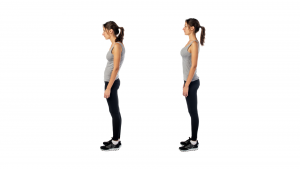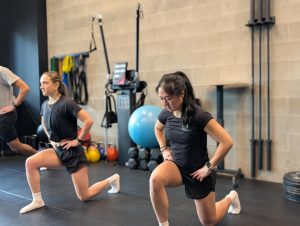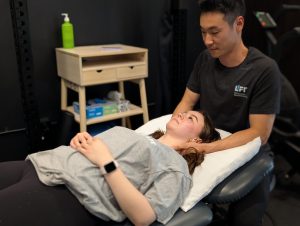Are you looking to increase your bench press this year? Is shoulder pain limiting how much weight you can press? Check out these tips to help you lift more and get rid of your shoulder pain!
1. Create an arch to protect the shoulder
Setting up an arch for your bench press can help you lift big weights by generating full body tension below the shoulder. It also helps to protect your shoulder by pinning the shoulders down to the bench. This allows your shoulder joint ball to sit deeper into its socket. Also, by having the upper traps as a base, the arch allows better leverage for the muscles in your back to do their role to stabilize your shoulder joint through retraction and depression. In a flat (non-arch) bench position, the shoulder has more of a tendency to shrug upwards and forwards leading to increased stress in the shoulder joint.
2. Play around with your grip width
How wide should you bench press? A large factor is your limb length. Each grip width has it’s pros and cons.
- A very wide grip width with a solid arch may allow you to press the most weight, but it may be stressful on the shoulder joint. It may also hinder your strength gains due to the decreased range of motion.
- A close grip would increase the activation of your triceps and also increase the range of motion, but it may also reach a deep horizontal flexion range that may be stressful for the shoulder.
- A mid grip can be the most comfortable, allow for vertical forearms, and adequate range of motion to train the muscles.
So how should you train? It depends on your goals. It may be good to work on a variety of grip widths to get the shoulder used to different positions. For example, a powerlifter may train volume with a mid grip and close grip to build muscle, and then practice the wide grip for competition as a skill to lift their heaviest weight.
3. Having big back muscles leads to big bench press and safer shoulders
The bench press uses the coordination of all your shoulder stabilizer muscles to create a stable base so the arms can just focus on doing it’s work to press the weight up. The back muscles work as an isometric contraction to maintain your bench press position throughout the whole set. You essentially want to imagine moving your shoulder blade towards your hips and hold it in that position. The muscles involved include the rotator cuff muscles, periscapular muscles and the latissimus dorsi. By holding your shoulder blade in the position where it’s depressed, retracted and closer to the rib cage, the arms will be better equipped to press that heavy weight for you.
4. Find your foot position
Although the foot is far away from the shoulder joint, it can play a role to help stabilize the shoulder. You can use a leg drive to further stabilize. In a powerlifting competition, you may be required to have a completely flat foot. In a training situation, you may want to place your feet back far enough to have your heel slightly lifted off the floor. This allows you to drive your heel towards the floor and initiate hip extension. By extending the hips while keeping your butt down on the bench, the hip extension moment will lead to a rise in the chest, which helps to further pin your shoulder down. If you’re training for a competition, it may be beneficial to train with your heel slightly elevated for the protective effect on the shoulder, and then switch over to flat feet as you get closer to competition.
5. Warm up your weaknesses
Does your warm up consist of just bench pressing with lighter weights? It can be beneficial to warm up and activate the muscles that help to perform the bench press. Adding a quick 10 minute warmup can have a protective effect on the shoulder and improve performance. You don’t need to lift heavy for the warmup, as you don’t want to fatigue the muscle before benching. Create a warm up circuit by throwing in a few sets of 25 reps of exercises targeting the rotator cuff, lats, triceps, and traps, and rhomboid muscles, and the bench press itself.
6. Sometimes less bench pressing means more gains
Ultimately, a big bench press session will stress the shoulder joint even with the “perfect technique” to minimize load on the joint. If your shoulder hurts from bench pressing, it may be a good idea to look at how often you’re programming the exercise during the week. The shoulder joint itself may not be getting enough time in between sessions to recover. Give yourself at least 72 hours before each bench press session. If it still hurts, maybe take a longer break and work on exercises that are less taxing on the shoulder (back muscles). If you’re maxing out every bench press day, it’s okay to program it only once a week.
Looking to get back to the gym? Wondering why your bench press hurts every time you go heavier? Book in with a physiotherapist at Lift Clinic!








